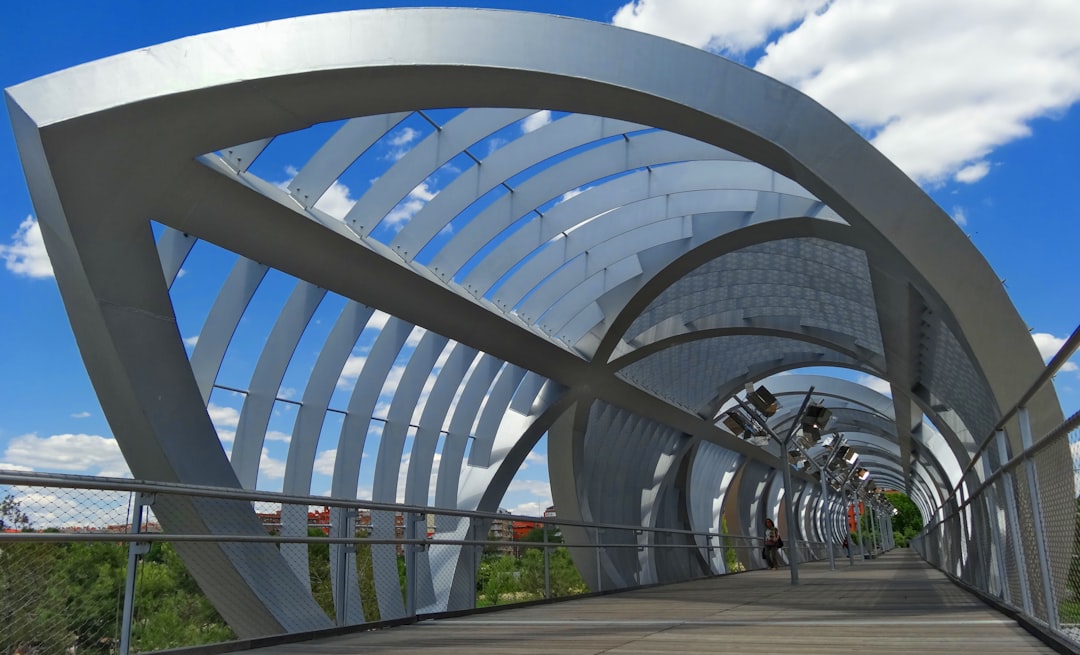body { font-family: sans-serif; line-height: 1.6; }
h1, h2, h3 { color: #333; }
img { max-width: 100%; height: auto; }
Steel bridges, majestic symbols of engineering prowess, grace landscapes worldwide. Their design, however, is a complex interplay of science, engineering principles, and artistic vision. This comprehensive guide delves into the key aspects of designing these impressive structures, providing insights into the process from initial concept to final construction.
1. Load Calculations: The Foundation of Steel Bridge Design
Before a single steel beam is even considered, accurate load calculations are paramount. This involves meticulously assessing all potential forces acting on the bridge throughout its lifespan. These loads include:
- Dead Loads: The weight of the bridge itself, including the deck, beams, girders, and other structural elements.
- Live Loads: The weight of vehicles, pedestrians, and other moving loads. Design codes specify different live load models based on the anticipated traffic volume and type.
- Environmental Loads: Forces from wind, snow, ice, and seismic activity. These loads can vary significantly based on the bridge’s location and climate.
- Impact Loads: Dynamic forces resulting from the movement of vehicles, especially heavier ones. These loads are often amplified in areas with significant gradients.
Sophisticated software and analytical techniques are used to determine the stress and strain distribution within the bridge structure under these various load combinations. Safety factors are incorporated to account for uncertainties and ensure the bridge’s structural integrity.
2. Material Selection: Choosing the Right Steel for the Job
The selection of steel grades is crucial for ensuring the bridge’s strength, durability, and cost-effectiveness. Factors influencing this choice include:
- Strength: Higher-strength steels allow for lighter and more slender designs, reducing material costs and improving aesthetics.
- Weldability: The ease with which the steel can be welded is essential for efficient fabrication. Certain steel grades are better suited for welding than others.
- Corrosion Resistance: Depending on the environment, corrosion-resistant steels, such as weathering steel or galvanized steel, may be necessary to extend the bridge’s lifespan.
- Cost: Balancing performance requirements with budgetary constraints is a key consideration in material selection.
Detailed material specifications are included in the design documents, ensuring that the chosen steel meets all required standards and performance criteria. This often involves specifying the chemical composition, mechanical properties, and testing procedures.
3. Structural Analysis: Ensuring Stability and Safety
Structural analysis is the backbone of steel bridge design. It involves using advanced computational methods to determine the internal forces, stresses, and deflections within the bridge structure under various loading conditions. Common analytical techniques include:
- Finite Element Analysis (FEA): A powerful numerical method that divides the bridge into smaller elements to simulate its behavior under load.
- Linear and Non-Linear Analysis: Linear analysis assumes a proportional relationship between load and deformation, while non-linear analysis accounts for more complex material behaviors and large deformations.
- Dynamic Analysis: Used to assess the bridge’s response to dynamic loads, such as earthquakes or wind gusts.
The results of the structural analysis are crucial for determining the required cross-sectional dimensions, member sizes, and connection details to ensure the bridge’s stability and safety under all anticipated loads.
4. Fabrication and Construction: Bringing the Design to Life
The fabrication and construction phases require meticulous planning and execution. Fabrication typically involves:
- Steel Cutting and Shaping: Precise cutting and shaping of steel members according to the design specifications.
- Welding: Joining steel members using various welding techniques, ensuring high-quality welds that meet stringent standards.
- Surface Treatment: Applying protective coatings, such as painting or galvanizing, to enhance corrosion resistance.
Construction involves the transportation and erection of fabricated steel members, often using specialized equipment such as cranes and lifting devices. Precise alignment and connection of members are crucial to ensure the bridge’s structural integrity.
5. Design Codes and Regulations: Adhering to Industry Standards
Steel bridge design must comply with relevant design codes and regulations, which vary depending on the country and region. These codes provide guidelines for:
- Load calculations: Specifying load models and safety factors.
- Material properties: Defining acceptable steel grades and their properties.
- Structural analysis: Outlining acceptable analytical methods and design criteria.
- Fabrication and construction: Setting standards for welding, inspection, and quality control.
Adherence to these codes is essential for ensuring the safety and serviceability of the bridge. Regular inspections and maintenance are also crucial throughout the bridge’s lifespan.
Designing steel bridges is a multifaceted endeavor demanding a profound understanding of structural mechanics, material science, and construction techniques. By carefully considering each aspect, from load calculations to regulatory compliance, engineers can create safe, durable, and aesthetically pleasing structures that stand as testaments to human ingenuity.
SEO Tags:
steel bridge design, bridge engineering, structural steel design, steel bridge construction, bridge load calculations




